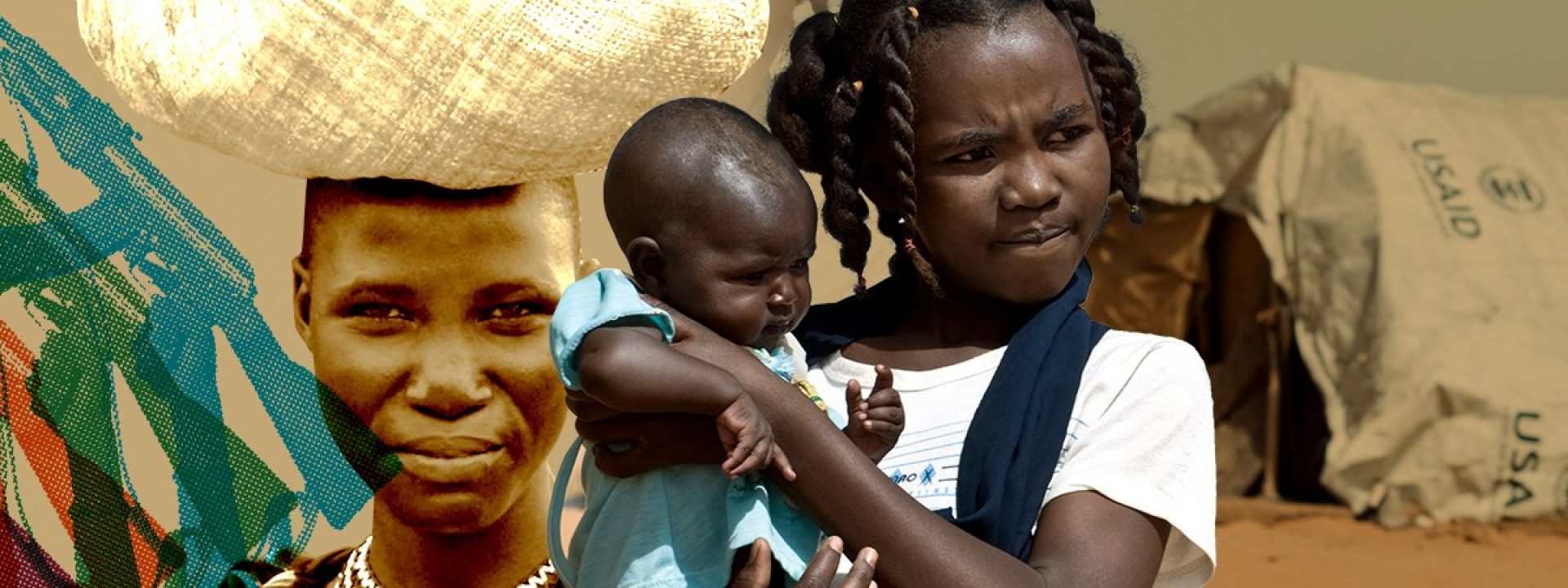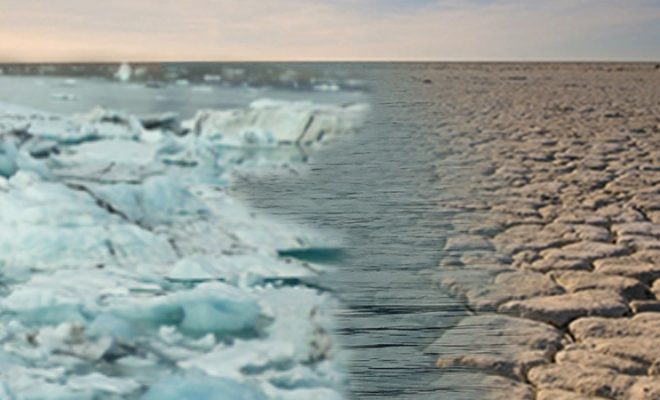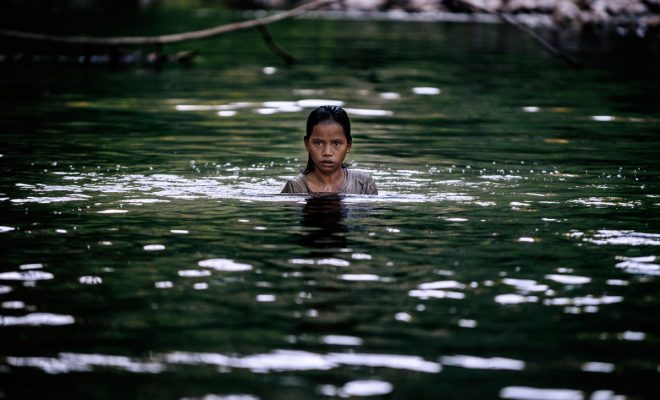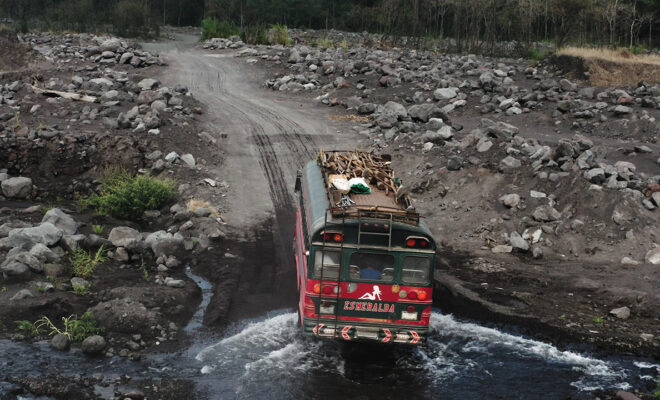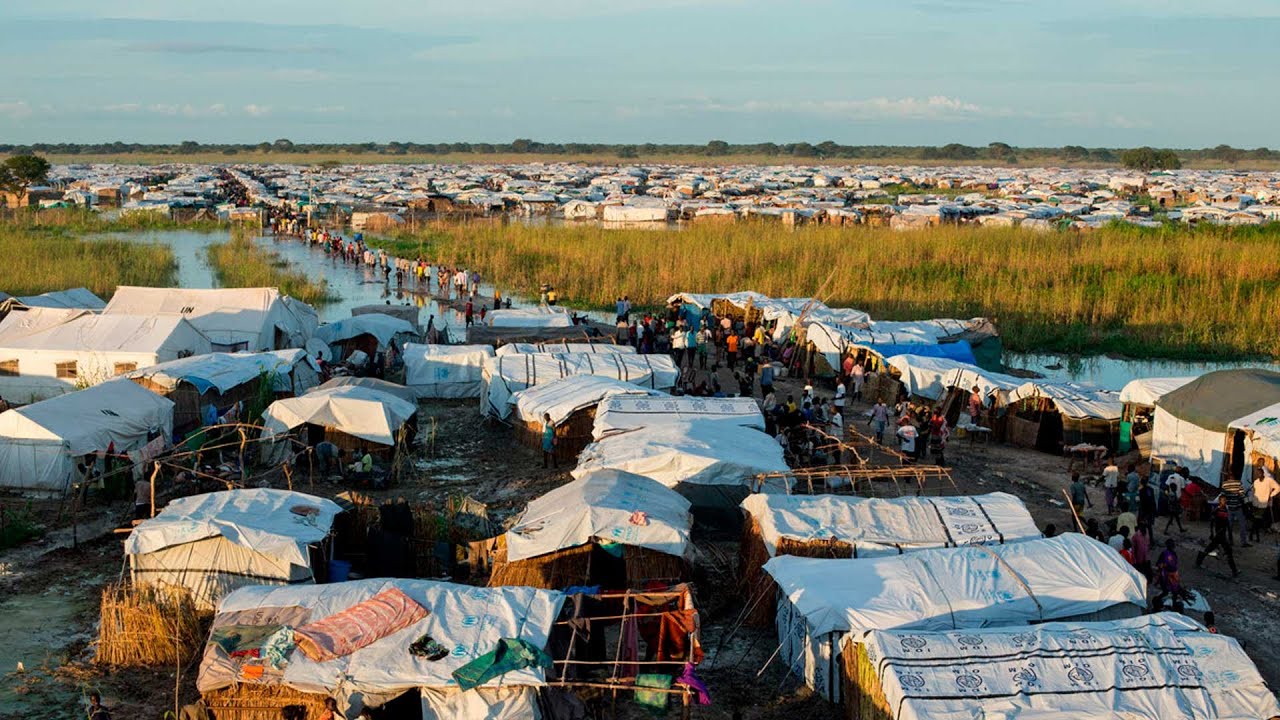
“Our country is at war with itself. We are all enveloped by the spirit and culture of war. Wherever we look in our country, we are met with destruction: we are known more for what we have destroyed than what we have built, which has become synonymous with our identity worldwide.”
In April 2019, the South Sudanese journalist Deng Ezekiel Ghew wrote this paragraph in an article in The New Sudan Vision titled South Sudan will rise from the ashes of destruction. He referred to the perception that the rest of the world, especially the industrialized countries, had of his country: constant war and famine in its short history. The tendency to forget is also evident: South Sudan has been an independent state since 2011 and not a region of Sudan, which is still little known in the rest of the world.
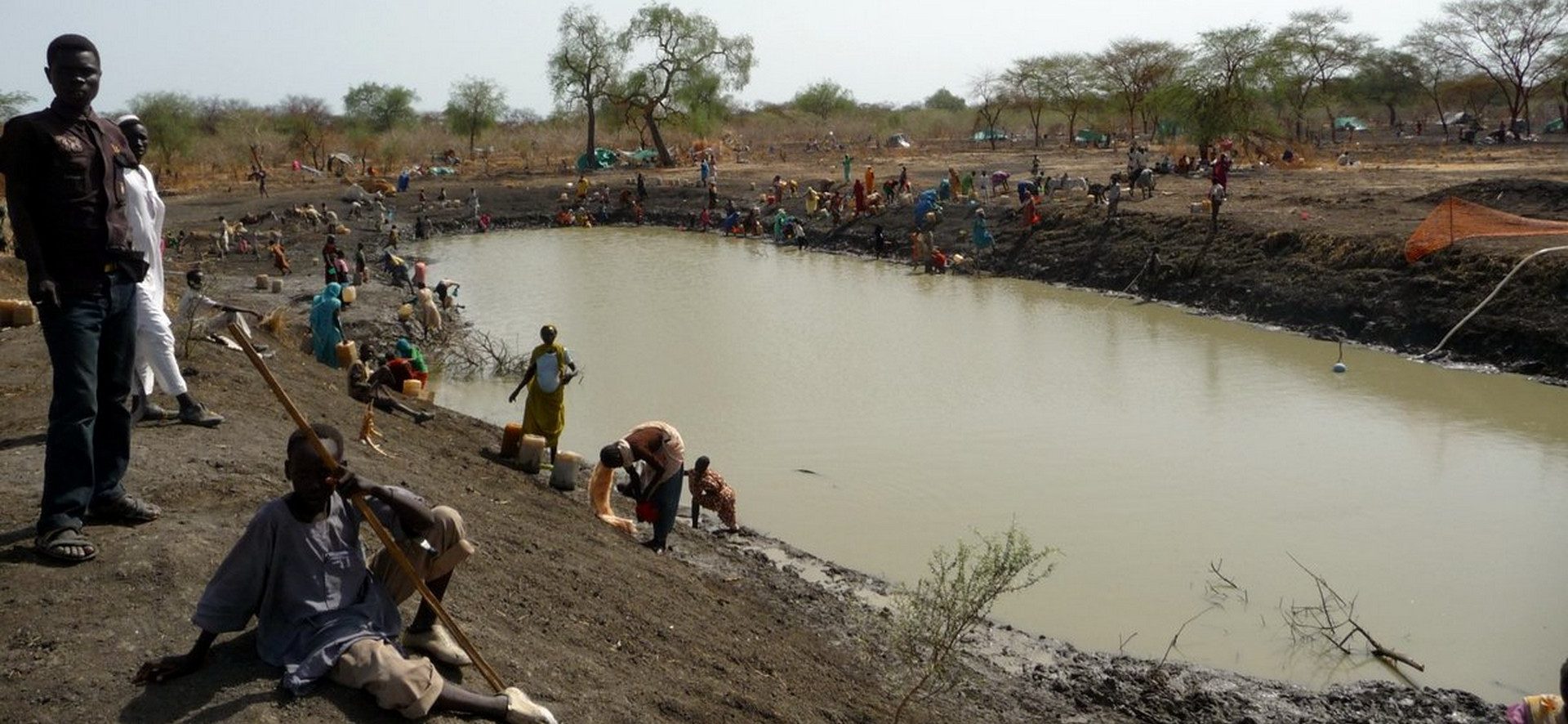
South Sudan is a lacerating example of neglect, ineffective governance, and climate injustice, three scourges that often coincide. © EU/ECHO/Thomas Conan
A chronic famine
The world’s youngest state has almost always been a source of bad news, but the situation now is much more challenging. The latest floods have triggered the worst food crisis in its history. The price of basic grains for the population is skyrocketing, and according to data from the UN World Food Program (WFP), 8.3 million people need urgent hunger relief. In addition, the price of fuel makes it difficult for clean water, food, and medicine to reach their destination.
Many of the few improved water sources are damaged, especially in rural areas where, in 2020 and according to JMP data, close to one million people were still using surface water. The floods have also affected access to sanitation, which has not yet recovered since the last episode of heavy rains. Many facilities with which aid organizations struggled to eradicate open defecation, practiced by more than 6.7 million South Sudanese, 60% of the population, have been destroyed.
The crisis has worsened since the WFP itself announced on June 14 the suspension of one third of the food aid received by the country because of the closure of Ukrainian ports on the Black Sea. Adenyika Badejo, WFP’s country director in South Sudan, explained: “This is happening at the worst time possible, as the famine is unprecedented.” On September 16, Badejo redoubled the alert: “We are distraught. Time is running out.”
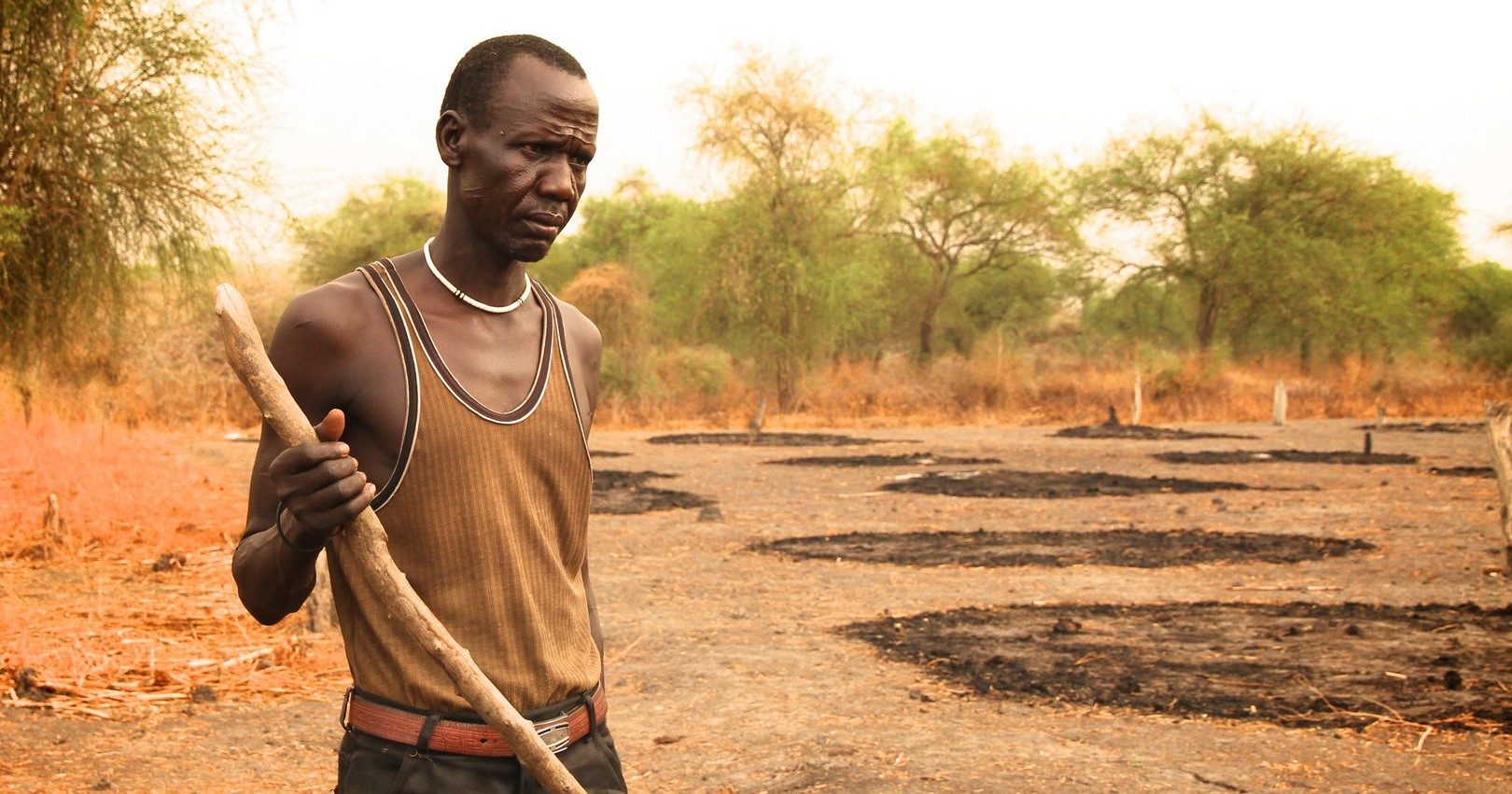
The latest floods and droughts have triggered the worst food crisis in the history of South Sudan. © European Union/ Eduardo Soteras Jalil
A foretold disaster
South Sudan confirms one of the worst-case scenarios that the IPCC has been advancing in its latest reports (AR5 and AR6): alternating droughts and catastrophic floods, which in many areas of sub-Saharan Africa have been occurring in recent years. In the wet season, from May to October, the Nile and its tributaries frequently overflow; the country’s orography does not help, as its central depression facilitates the accumulation of water in vast areas of crops and impoverished villages with flimsy houses.
According to the Sudd Institute, this historical sequence of floods totals 27 since 1991 and has intensified in the last four years, making the resilience of the affected rural communities very difficult. In 2021, the worst floods ever experienced in the country affected more than 835,000 people, according to the UN Office for the Coordination of Humanitarian Affairs, and caused hundreds of thousands of displaced people. Most of them have not yet been able to return to their homes. FAO estimates that 65,107 hectares of cereal crops were flooded, and 37,624 tons of grain were destroyed in this episode.
What is happening now was predicted. This March, UNHCR, the UN Refugee Agency, warned that seasonal rains would fall on a country that had suffered three devastating episodes – in 2019, 2020, and 2021 – from which it had not yet recovered. This September, displaced people were again numbering in the thousands. Most of those who remain in their homes are isolated in areas protected by dikes, struggling to stem the rising waters with mud, sticks, and plastic sheeting. In the worst affected areas, crops have rotted, and an estimated 800,000 head of livestock have perished.
In these cases, the priority is always to provide access to clean water and food by distributing jerry cans and water purification tablets to collect water for drinking or trucking in water. But humanitarian organizations are also having difficulty distributing insufficient aid. Only 2% of the roads are paved, making them an impassable quagmire, and most of the airstrips at remote airfields are also flooded. In addition to water, food, and medicine, they need pumps to bail out water from the villages, heavy equipment with which they can build flood barriers, and mounds on which their livestock can be kept safely above the water level.
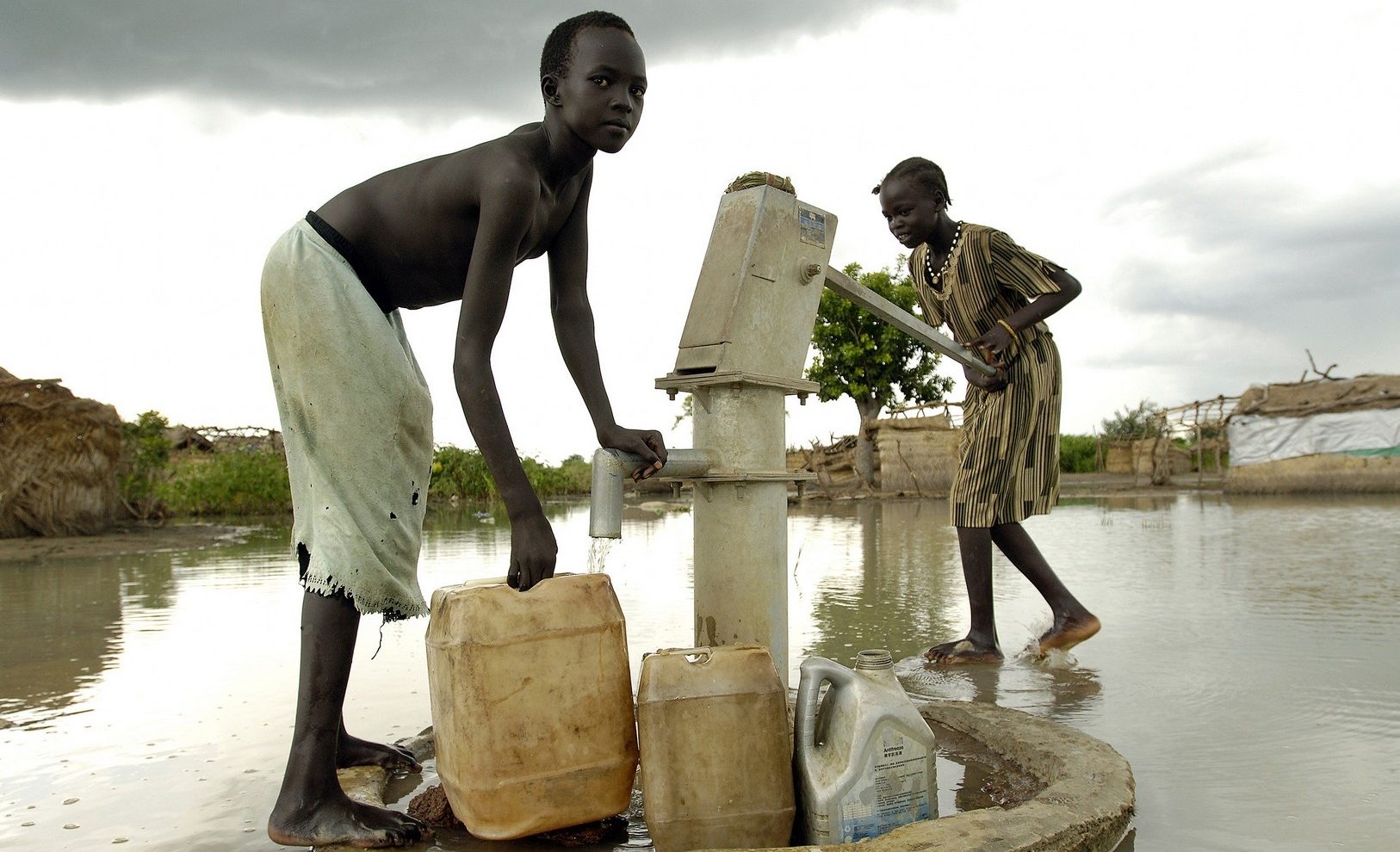
In 2021, the worst floods ever experienced in the country affected more than 835,000 people in South Sudan. © UN Photo/Tim McKulka
The plight of war and climate injustice must end
South Sudan’s humanitarian crisis does not only have a climatic cause. The war began in December 2013 and has spread over the past few years. It has generated nearly two million internally displaced civilians and more than 1.5 million who have taken refuge in neighboring countries. The militarized, corrupt, and undemocratically trained government cannot curb inter-communal and inter-ethnic clashes.
For South Sudan to get back on its feet, it will require help beyond humanitarian emergencies. It will need, first and foremost, determined international action to build a solid democratic system through consistent partnerships and long-term aid programs. This aid will also need to recognize and act to compensate for “climate injustice,” which reminds us that the countries that emit the least CO2 are the most vulnerable to the impacts of global warming.
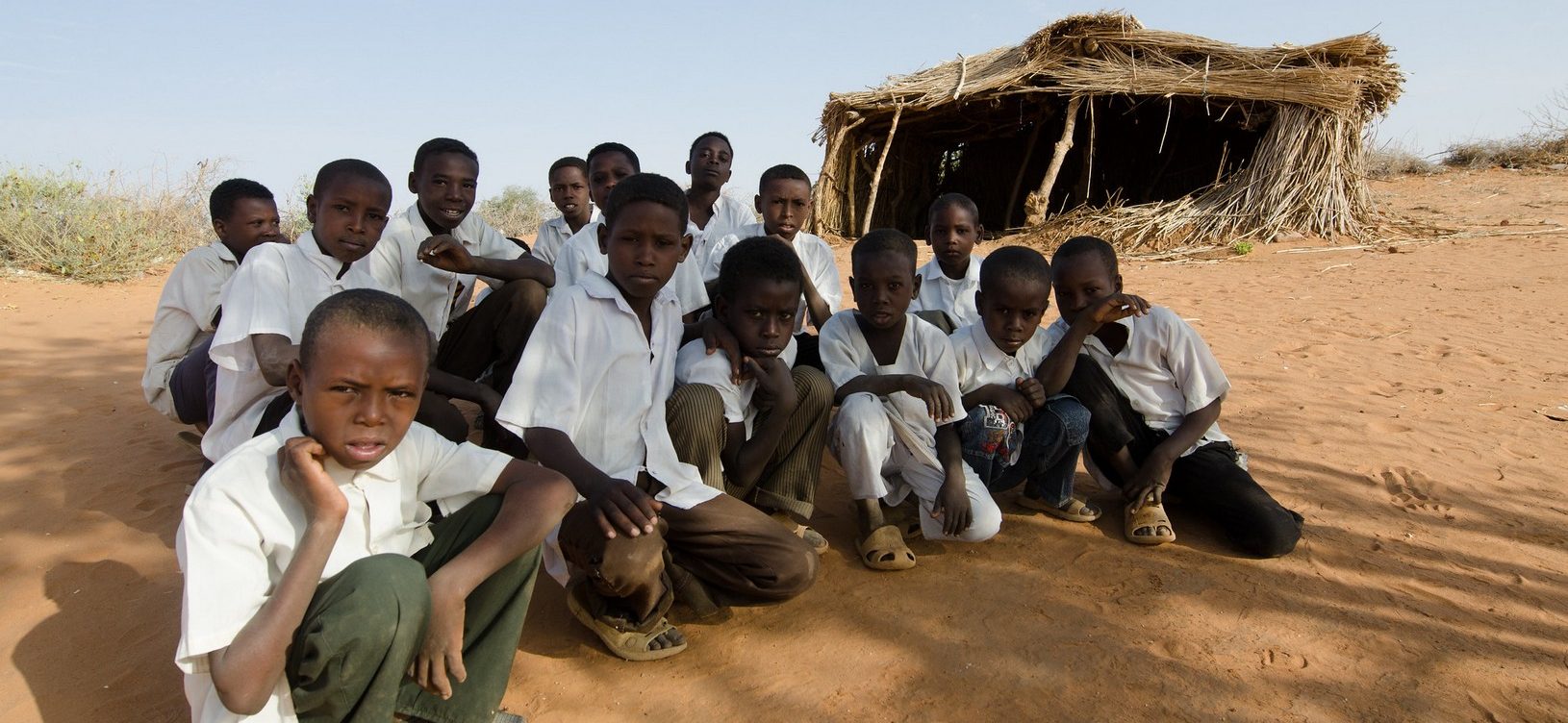
in South Sudan, The war began in December 2013 and has spread over the past few years. It has generated nearly two million internally displaced civilians and more than 1.5 million who have taken refuge in neighboring countries. © Salahaldeen Nadir / World Bank
According to the World Bank, South Sudan is among the large group of nations, mainly sub-Saharan and Central American, whose greenhouse gas emissions are approximately 44 times less than those of industrialized countries. The upcoming COP 27 in Sharm el Sheikh should take a decisive step in this direction.


